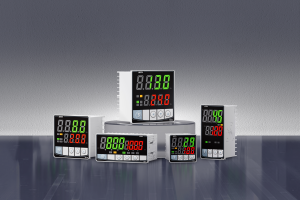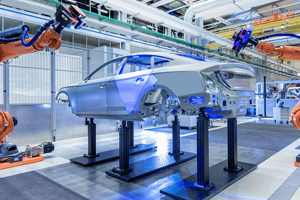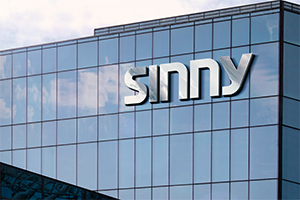What is Filter Coefficient in PID Controller? Understanding Its Role and Applications
Discover what the filter coefficient in PID controllers is, how it works, and its importance in reducing noise and improving system stability. Learn about tuning methods and applications in various industries.
1. Introduction
PID Control (Proportional-Integral-Derivative control), commonly referred to by its acronym PID (Proportional, Integral and Derivative), has become one of the cornerstones of industrial automation and process control systems. PID controllers depend heavily on filter coefficient tuning in order to perform effectively; understanding its role and tuning is integral in optimizing PID controllers for maximum effectiveness.
2. Understanding PID Controllers
PID controllers are widely utilized across industries to maintain desired levels of process variables like temperature, pressure and speed. A PID controller consists of three elements that make up its overall function:
* Proportional (P): This component generates output proportional to the current error - defined as any difference between setpoint and process variable values - thus helping reduce total error but potentially not completely eliminate it.
* Integral (I): Integral control involves adding up past errors over time and incorporating them into control action to eliminate steady-state error that proportional controls alone cannot address.
* Derivative (D): The derivative component predicts future trends based on current rate changes of an error and acts as a damping device, helping reduce overshoot while simultaneously improving system stability.
Filter Coefficient
A filter coefficient, often denoted "N," is an adjustment used in PID controllers to modify their derivative term and eliminate high-frequency noise that causes instability or excessive wear and tear on actuators. By smoothing this derivative action and making our control systems more robust and reliable.
Mathematically, the filter coefficient can be introduced via derivative term as follows.
[ D_textfiltered = [ frac N cdot D+1 + Ncdots+1]]]
Where (D) stands for derivative term, (N) stands for filter coefficient and (s) stands for Laplace transform variable. This equation illustrates how filtering attenuates high frequency components reducing noise pollution significantly.
3. How the Filter Coefficient Works in PID Controllers
A filter coefficient is added to a PID controller's derivative term in order to decrease noise-amplified by rapid fluctuations, leading to uncontrollable control actions and potentially unstable stability. By including filtering, however, its derivative becomes less sensitive to sudden movements resulting in smoother and more consistent control actions.
Consider, for instance, a motor speed control system in which PID controller regulates motor's speed. Without applying filter coefficients to smoothen out derivative action and ensure stable speed regulation. Any noise in speed measurement could cause it to fluctuate quickly as measured speed fluctuated; leading to mechanical wear and reduced performance as a result of rapid fluctuating signals triggered by PID control signal. By adding filter coefficients smoothed action is ensured thus guaranteeing precise speed regulation with consistent and stable results.
4. Tuning Filter Coefficient
Tuning filter coefficient is key to optimizing PID controller performance. Care must be taken when choosing this parameter so as to balance noise reduction with responsiveness; selecting too low of a value might hinder effective noise-filtering while too high an amount could render derivative action less responsive, ultimately diminishing controller responsiveness.
5. Tuning the filter coefficient may involve various approaches:
* Empirical Tuning: Empirical tuning involves manually adjusting filter coefficients while monitoring system response; this technique requires experience and intuition but can provide effective fine-tuning solutions.
Simulation-Based Tuning: With simulation tools, filter coefficient adjustments can be adjusted and tested on virtual systems before being applied directly to real systems - creating safer and more effective tuning solutions.
* Analytical Methods: Mathematical analysis and optimization techniques may be utilized to ascertain an ideal filter coefficient according to system characteristics and performance criteria.
Practical strategies for effective tuning include starting with a modest filter coefficient, monitoring how your system responds, and making incremental adjustments as you monitor system response. Furthermore, it's crucial that tradeoffs be considered between noise reduction and responsiveness when making any modifications to reduce or increase either one of them.
Filter Coefficient Applications in PID Controllers Filter coefficient is widely utilized across industries to enhance performance and stability of PID controllers, such as:
* Motor Control: Filter coefficients in motor control systems serve to minimize noise produced by speed sensors, providing smooth and precise speed regulation.
Temperature Control: In HVAC and industrial oven systems, filter coefficients enhance temperature stability by filtering out noise generated from sensors.
*Process Control: Filter coefficients in chemical and water treatment plants increase stability of flow and pressure control by mitigating sensor noise effects, providing more predictable flow rates and pressures.
*Robotics: Filter coefficients play an essential part in providing accurate and stable motion control by decreasing noise from position and velocity sensors.
6. Advantages and Limitations
Filter coefficients in PID controllers offer numerous advantages:
* Noise Reduction: The filter coefficient effectively attenuates high-frequency noise to improve control system stability and reliability.
* Improved Performance: By smoothing derivative action, filter coefficients enhance overall PID controller performance.
* Extended Actuator Life: Reducing noise-induced fluctuations in control signals helps minimize mechanical wear on actuators and extend their operational lifetime.
However, there are also certain restrictions:
* Tuning Complexity: Tuning a filter coefficient properly can be challenging and require experience and expertise for success.
* Tradeoffs: Balancing noise reduction with responsiveness requires making compromises that must be carefully managed in order to be successful.
* System Dependency: The effectiveness of filter coefficients depends upon specific features of a control system and nature of noise source.
7. Conclusion
Filter coefficient is a critical parameter in PID controllers that significantly influences performance and stability of control systems. Achieving maximum effectiveness when tuning PID controllers across various applications relies heavily on understanding its role, operation and tuning - while some challenges exist, filter coefficient remains an effective tool in increasing robustness and reliability for these control systems. As technology develops further, its future remains optimistic with potential upgrades to tuning methods as well as integration into advanced control strategies.
- How to Calibrate a PID Controller: A Comprehensive Guide
- What Does PID Mean in Controls? Understanding PID Controllers and Their Applications























